QuestionHi Jill,
A week and a half ago my husband and I adopted a rescue dog. She's a 9 month old, spayed blue heeler/bassett hound mix. We don't know a lot about her history. She has been an absolute delight and appears to have bonded with us quickly. Today I took her out for her noon walk. She seems a little preocupied with the neighbor's dogs barking, though she has heard them bark every day. I took a tissue out of my pocket and blew my nose. For a moment she looked at me quizzically, then she flipped out in a way I have never seen a dog behave. She jumped several feet in the air over a dozen times, using her front legs to try to get her collar off and pulling at the leash. She growled and barked very ferociously at me. After a minute she just bolted for the house with me trailing behind on the leash. When we got to the front steps she hid under them from me. She was scared enough that she expressed her anal glands. I sat on the steps and talked calmly until she came out. She still cowered from my hand for a few minutes. After a while she came close and licked me, ten I brought her in. She scraed me half to death! If she had slipped her collars off I'm afraid we never would have seen her again, considering she is new to us and we live deep in the woods. I was so scared that I am not sure I reacted well. Do you have any insight and if this happens again what would be the best way for me to respond? We are crazy about her and want to make sure we do things right.
Answerthat's SOME MIX!! Basset and blue Heeler?? yikes. I wish you had attached a picture, I have doubts about this mixture.
Your nose blowing must have been received as a signal of aggression: think about it. The force of air through the nose and its concomitant sound can be construed as a growl. If the dog were already anxious (as she most likely was), this sudden "aggression" on your part (a cough is construed as a growl by dogs, also), coupled with her restraint to you on leash, terrified and confused her. Do not be so casual with this dog; she is barely in your home yet and will require a couple of months to habituate fully and learn to trust you. Whatever this dog has been through, it has been enough to cause her a heightened awareness around humans and "strange" environments.
First: have her fitted for a body harness and use that along with her MARTINGALE collar (NOT CHOKER, see this site: http://www.things4yourdog.com/product/407064
Second, immediately begin a course of positive reinforcement training, beginning with "sit" but use a unique word. Concentrate on that one behavior for quite a while, as the entire purpose of this training is to promote trust, give the dog a behavior she can always perform for reward, and give you a behavior you can redirect her to outdoors if she suddenly demonstrates fear. Learn about this training at ClickerTraining.com.
Third, read Turid Rugaas' book, "Calming Signals" to give you a real vantage point from which to read this dog's body communication instantly, indoors or out, and respond in kind. When outdoors (with your new equipment, thereby making it impossible for her to suddenly get loose), if you perceive a fear response in this dog, go quickly in the opposite direction with a very happily spoken "come along"; once she has learned the "sit" with positive reinforcement, you can ask her for a "sit", then go back in the original direction, having successfully short circuited her fear response and put in its place some solid cognition. Reward her confidence; redirect her fear or anxiety.
Give this dog time to relax; asking her to 'sit' for various normal activities (like being petted, being fed) off and on over the next few weeks or months will help her to be calmer and feel there is someone else in control. Don't worry about her preoccupation to other dogs barking, this is normal: in dog culture, dogs communicate in many ways and vocalizing is one of them. She may be curious about them and want to get closer; observe this carefully and if you see any over excitement upon her meeting or seeing them, redirect it to calm her down and then reintroduce her. Go slowly. You don't know where she's been and what's been done to her, but whatever it was, it wasn't good.

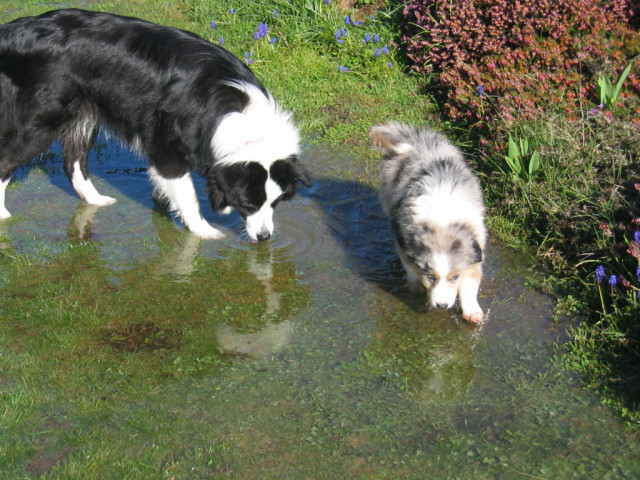 Dog in Heat?
QuestionLily and Jorge
QUESTION: Hello,
We have
Dog in Heat?
QuestionLily and Jorge
QUESTION: Hello,
We have
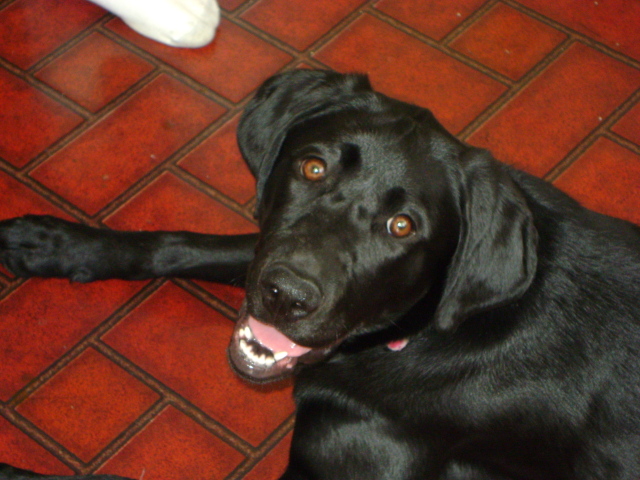 Black lab - 1 yr
QuestionSheba
QUESTION: My lab loves to bite her
Black lab - 1 yr
QuestionSheba
QUESTION: My lab loves to bite her
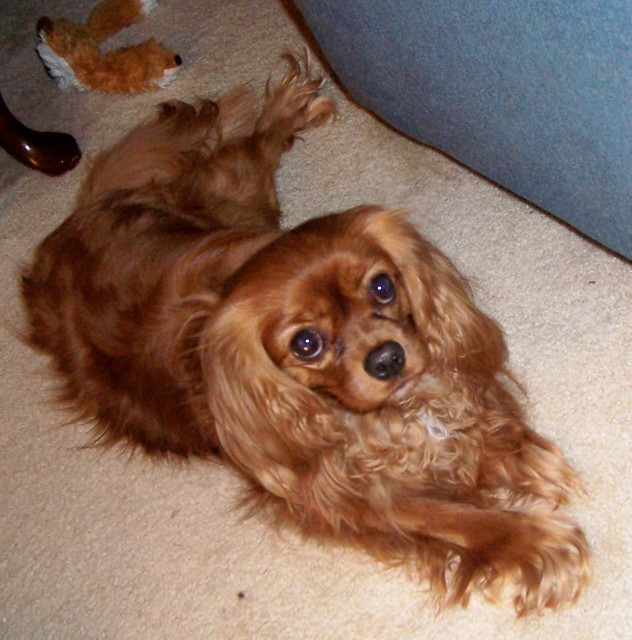 Dog light and shadow chasing
Question
Jenni
My 3 year old Cavalier King Charles Span
Dog light and shadow chasing
Question
Jenni
My 3 year old Cavalier King Charles Span
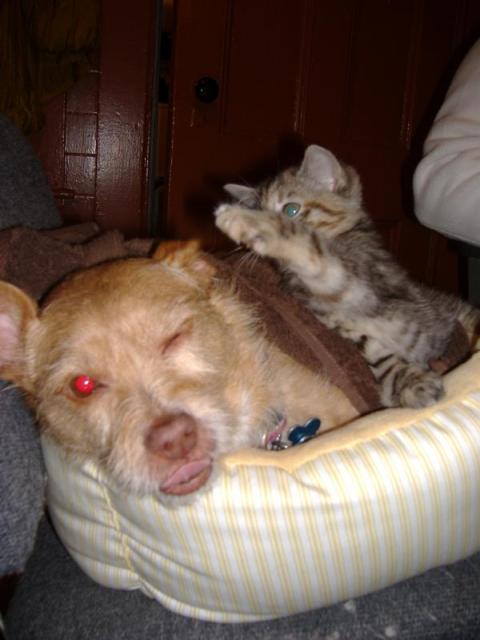 My dog is shaking and hiding under my bed recently
QuestionRorrie and Pencil
QUESTION: My dog, Rorr
My dog is shaking and hiding under my bed recently
QuestionRorrie and Pencil
QUESTION: My dog, Rorr
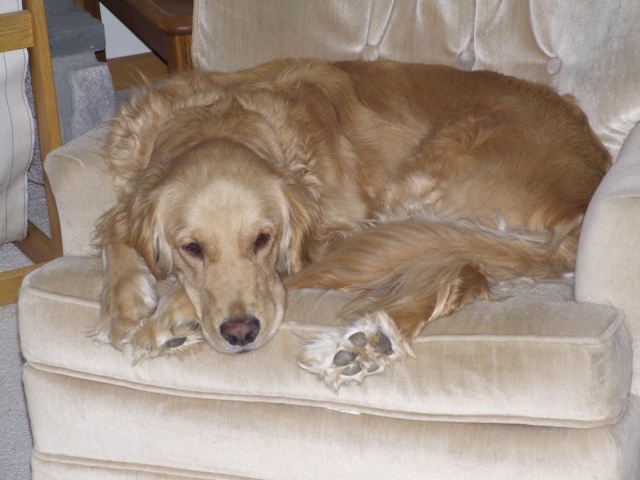 aggression in aging dog
Question
Niko
I have a thirteen year old, female, Samoy
aggression in aging dog
Question
Niko
I have a thirteen year old, female, Samoy